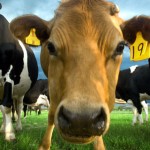A new year and a new set of – as well as many old – challenges face New Zealand’s agricultural sector.
Already with 2015 only just begun; we see Canterbury and other eastern parts of the country facing a long, dry summer. Meantime, Fonterra is struggling to meet its forecast payout of $4.70/kgMS and the red meat sector – especially sheep – is merely treading water.
As Waikato University’s Jacqueline Rowarth so eloquently puts it water is the burning issue for New Zealand.
While so-called environmentalists and other interest groups want stymie almost every proposed irrigation scheme mooted around the country. Take the on-going battle the proponents of the Ruataniwha dam in the Hawkes Bay continue to face in trying to get that scheme up and running.
It is easy to forget that the actual issue in New Zealand is not water – but water storage.
Again; as Professor Rowarth rightly points : ‘New Zealand receives 608 billion cubic metres of water annually, but uses only 1.8%. Just over half of that 1.8% is used in irrigation, 23% by industry, 17% in drinking water and 7% is used by stock. It is the 597 billion cubic metres of water that is currently running out to sea that is of concern’.
The challenge for the agri-sector – and those of us reliant on it – is to ensure that facts like these are seen and heard by the general population. Too often all the general public are served up with is the emotive agenda pushed by groups like Forest& Bird and/or Fish&Game – -where often the facts are not allowed to get in the way of their arguments.
There is little doubt dairy farmers will have a much tougher season this coming year than the past few. Yet, going by some of the ill-informed media reports thus far, one could be forgiven for thinking the entire dairy industry is on the brink of collapse and the country’s economy not far behind it.
History shows that all commodity sectors endure both highs and lows. Unfortunately, dairy is currently experiencing the latter – after a couple of stellar seasons of the former.
Meanwhile, to misquote Mark Twain: ‘Reports of sheep meat prices and the sector rising from the dead have been greatly exaggerated’. Sure there has been a lift in prices, but this was off an unsustainably low base and some sort of reform/rationalisation for the sector is badly needed.
I look forward to, again, sharing this journey with you.










